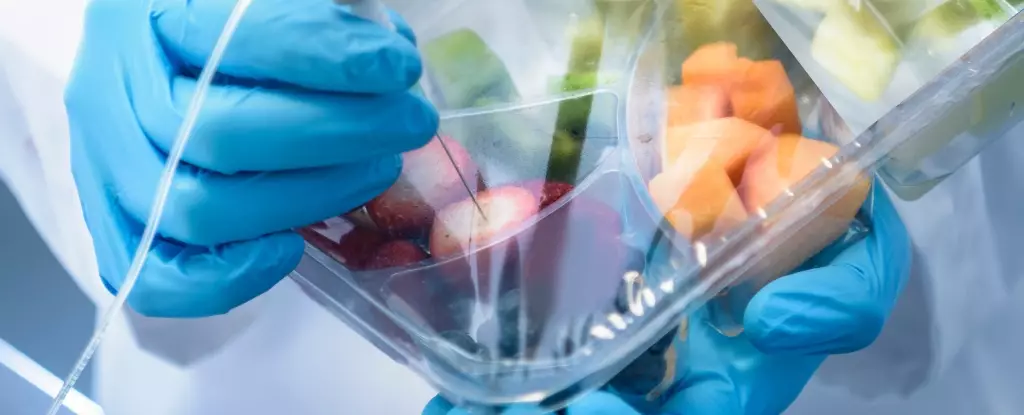The increasing presence of chemicals in our everyday lives is a pressing concern, particularly within the realm of food safety. A recent study has shed light on the alarming prevalence of over 3,600 chemicals used in food packaging and preparation, some of which pose serious health risks. This revelation prompts a critical evaluation of the materials we consume and the potential long-term consequences of their exposure.
The Scope of the Study
The investigation, spearheaded by Birgit Geueke from the Food Packaging Forum Foundation in Zurich, has brought the issue of chemical contamination into sharper focus. The study identified approximately 100 chemicals classified as having “high concern” regarding their health impacts. Among these troubling substances are well-known offenders such as PFAS (per- and polyfluoroalkyl substances) and bisphenol A, both of which have been targeted by regulatory authorities due to their hazardous nature. Unfortunately, many other substances in food contact materials remain poorly understood.
Despite the researchers initially anticipating the identification of a few hundred food contact chemicals (FCCs), the study revealed a staggering 3,601 different chemicals present in human bodies. Unsurprisingly, this figure comprises a quarter of all known FCCs, hinting at the extensive exposure individuals have to these substances throughout their daily lives.
The chemicals identified are far from innocuous. PFAS, known colloquially as “forever chemicals,” have been linked to numerous adverse health outcomes, from liver damage to immune system dysfunction. Bisphenol A, a widely recognized endocrine disruptor, has prompted bans in baby bottles across many nations due to its connection with reproductive harm. Furthermore, the study also raised alarms about phthalates, another class of hormone-disrupting chemicals associated with infertility.
However, Geueke emphasizes a significant limitation: the study does not specify the concentrations of these chemicals within human bodies or establish a direct link to food packaging as the sole exposure source. It raises critical questions about the pathways through which these harmful substances enter the human system, suggesting that contamination may also occur through other environmental channels, such as water supply and household items.
Geueke’s call for further research underscores the critical knowledge gaps surrounding the health effects of many of these unidentified compounds. Notably, oligomers—byproducts of plastic production—were among the chemicals flagged, yet little is known about their potential health risks. The collective interaction of these chemicals, which can accumulate and combine within the body, presents an additional obstacle for toxicological assessments.
As Geueke pointed out, a particular concern arises when multiple PFAS were detected in a single sample, leading to complexities in understanding individual toxicity versus cumulative exposure. The classic toxicology adage, “the dose makes the poison,” becomes obsolete in such multifaceted scenarios, where the interaction of chemicals poses unforeseen challenges.
Recommendations for Consumers
In light of these findings, experts like Duane Mellor from Aston University recommend practical actions that consumers can take to mitigate their exposure to harmful chemicals. One of the foremost recommendations is to minimize the duration in which food comes into contact with packaging, especially avoiding the heating of food in its original packaging. This simple precaution could significantly reduce the risks associated with chemical migration into food.
Furthermore, Mellor advocates for a call to action—encouraging consumers to demand better research and transparency on chemical safety from manufacturers and regulatory bodies. While the study provides essential insights into the extent of contamination, it ultimately emphasizes the need for robust data to shape informed practices and policies.
Conclusion: A Call for Awareness and Action
As the body of research expands, society must confront the implications of chemical exposure in the food chain. The startling findings from this study serve as a wake-up call, catalyzing a movement toward safer food packaging practices and heightened consumer awareness. By advocating for stricter regulations and prioritizing research, we can collectively work towards a future where the dangers presented by chemical contaminants in food packaging are minimized, ensuring better health for all individuals.


Leave a Reply